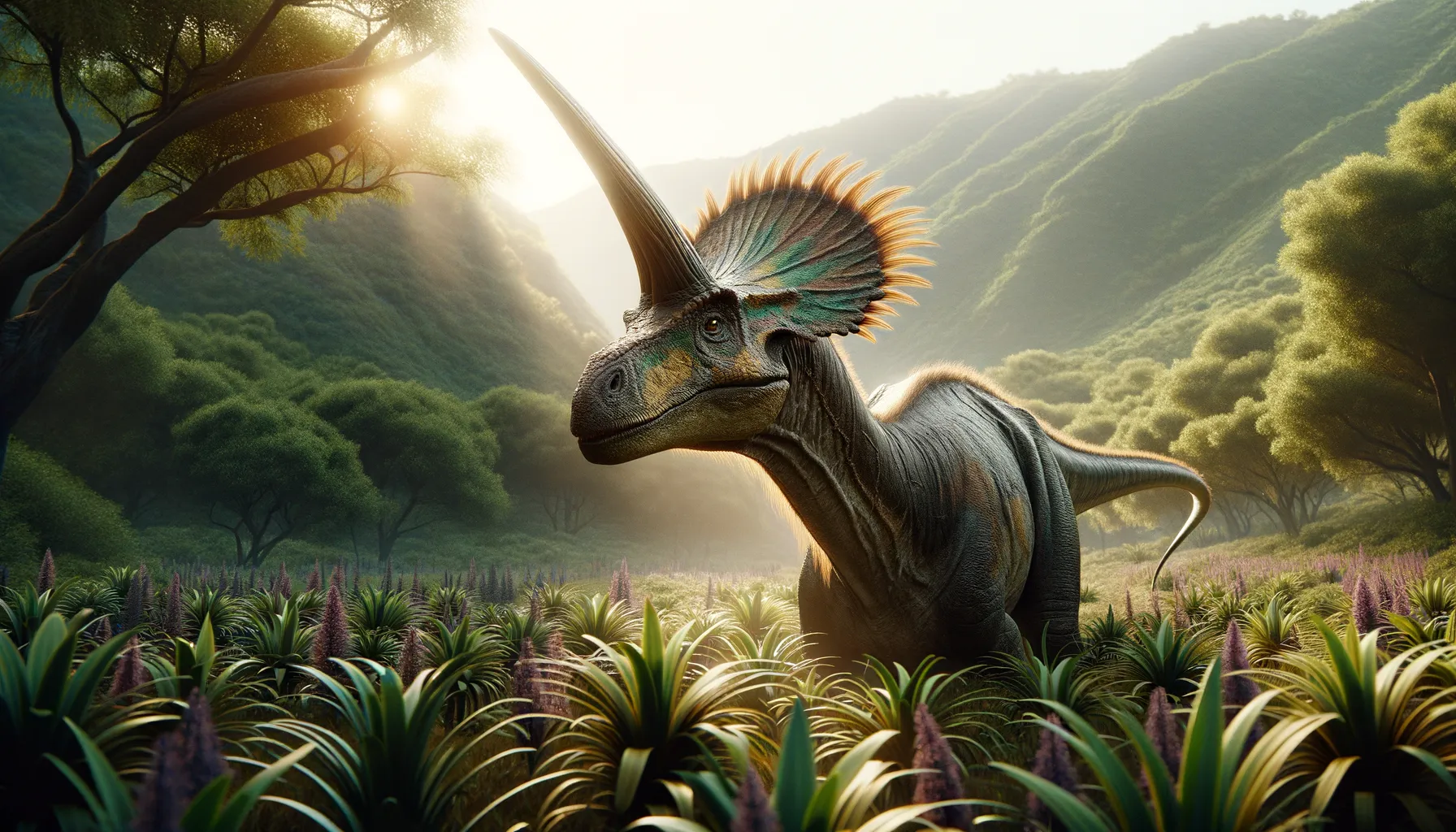
Tsintaosaurus
The unicorn of the dinosaur world.
Period
Cretaceous
Length
About 10 meters from head to tail.
Height
Approximately 5 meters at the head crest.
Weight
Around 2 to 3 tons.
Tsintaosaurus is a remarkable hadrosaurid dinosaur known for its distinctive 'unicorn' crest, found in China during the Late Cretaceous period. It was a herbivore, adapted for grazing on a variety of plant life. This dinosaur is a part of the duck-billed family and illustrates the great diversity among crested dinosaurs, helping us understand the evolutionary path of these fascinating creatures.
Diet
Tsintaosaurus was a herbivore, primarily feeding on a variety of plant material. It likely consumed leaves, twigs, and possibly seeds as part of its daily diet.
Hunting
As a plant-eater, Tsintaosaurus did not hunt for meat. Instead, it would have used its beak-like jaws to strip vegetation, probably grazing in groups for safety from predators.
Environmental challenges
Living during the Late Cretaceous, Tsintaosaurus faced challenges like climate changes and habitat shifts. Volcanic activity might have affected its environment, causing changes in vegetation. Predators posed a constant threat, requiring vigilance within its herd.
Speed
Moderate, likely maintained a steady walking pace.
Lifespan
Estimated 20 to 30 years based on similar dinosaurs.
First discovery
Discovered in 1958 by C.C. Young in China.
Fun Facts
- Tsintaosaurus is known for its distinctive unicorn-like crest on its head.
- This dinosaur lived approximately 83 to 70 million years ago during the Late Cretaceous period.
- Tsintaosaurus was a herbivore, meaning it only ate plants.
- It was first discovered in Shandong province, China, and is sometimes called the 'Shandong dinosaur.'
- The Tsintaosaurus could grow up to 33 feet (about 10 meters) long.
- Its unique crest might have been used for communication or to attract mates.
- Tsintaosaurus is part of the group of dinosaurs known as duck-billed dinosaurs, or Hadrosaurids.
Growth and Development
Tsintaosaurus likely hatched from eggs and grew rapidly, like other dinosaur species, to avoid predation. Juveniles may have had different coloration than adults to blend into their surroundings better. As it matured, its iconic crest developed, possibly for identification or social interaction within the herd.
Habitat
The habitat of Tsintaosaurus was rich in plant life, with lush forests and open spaces suitable for feeding. Such environments would support herd living, providing safety in numbers. Water sources were critical, as they maintained the diverse vegetation needed for their sustenance.
Interaction with other species
Tsintaosaurus likely coexisted with various other herbivores and faced competition for food. It also shared its habitat with carnivorous dinosaurs, creating a dynamic ecosystem. Social interactions within its herd would have been crucial, as these connections could offer protection from predators.
Natural lifespan
In the wild, Tsintaosaurus may have lived up to 30 years.
Reproduction
Tsintaosaurus is believed to have laid eggs in nesting colonies, collaborating with other members of the herd. Parental care was likely minimal, with young rapidly learning to fend for themselves. The adults might have been protective of nesting sites, ensuring the continuation of the species.
Social behaviour
Tsintaosaurus probably lived in herds, which provided safety in numbers. The crest might have played a role in social interactions, helping individuals identify each other. Group living would enhance protection from predators and perhaps facilitate better feeding opportunities.
Fossil locations
Fossils of Tsintaosaurus have primarily been found in Shandong Province, China. This discovery highlights the rich paleobiogeographical distribution of hadrosaurids in Asia. The findings contribute to our understanding of dinosaur migration and speciation patterns in this region.
